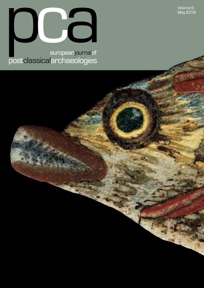 F.-D. Deltenre, L. Orlandi, «Rien ne se perd, rien ne se crée, tout se transforme». Transformation and manufacturing in the Late Roman villa of Aiano-Torraccia di Chiusi (5th-7th cent. AD) in PostclassicalArcheologies, 6, 2016, p. 71-90.
F.-D. Deltenre, L. Orlandi, «Rien ne se perd, rien ne se crée, tout se transforme». Transformation and manufacturing in the Late Roman villa of Aiano-Torraccia di Chiusi (5th-7th cent. AD) in PostclassicalArcheologies, 6, 2016, p. 71-90.
Cliquer pour voir le pdf : Deltenre-Orlandi-PCA6
Abstract: The Roman villa of Aiano-Torraccia di Chiusi (Siena) dates from the 4th c. AD and witness- es various phases of occupation up to the 7th-8th c. AD. During the 6th c. AD, the com- plex was deprived of a great part of its decoration, the elements of which were recycled in the productive process implanted inside the villa. This site appears to be not only a real “mine” of reusable material, but also a centre manufacturing metal objects, glass and gold, and probably also pottery. The aim of this paper is to present the workshops brought to light during eight excavation campaigns.
Riassunto: La villa romana di Aiano-Torraccia di Chiusi (Siena) si data al IV secolo d.C. e vive fasi di vita diverse fino al VII-VIII secolo. Nel corso del VI secolo, il complesso venne spogliato della decorazione architettonica, che venne riciclata nelle attività produttive impiantate al suo interno. Il sito appare non solo come “miniera” di materiali riciclabili, ma anche come centro di officine artigianali che lavorano metalli e vetro, e probabilmente anche ceramica. Questo contributo presenta gli impianti e le attività produttive portati in luce durante gli otto anni di scavo.
